在神农时代,饮茶之风便已兴起,至今已有4700余年的历史。茶,作为中国文化的重要瑰宝,在茶道中被誉为“活化石”。它不仅是一种饮品,更是一种生活态度与养生智慧的体现。今天,让我们一同探索几款经典养生茶方,感受茶香中的健康奥秘。
今天和大家分享这些茶方,是想让大家知道在春季,有哪些方法可以帮助我们养脾胃、消积食、增加胃口。
一、健脾消食茶方
山楂麦芽苹果水
配方:以绿茶为底,加入1个去核苹果、10克山楂(新鲜山楂3个或干山楂10克)、20克炒麦芽,加1000毫升水煮开。
功效:山楂擅长消解肉类食物,助益脾胃运化,兼具护肝、开胃、生津止渴之效;炒麦芽则能有效化解积食,尤其适用于聚餐后或小儿因食蔬果过多而致的腹胀不适。此茶方适用于脾胃虚弱、食欲不振者,以及春季欲护肝健脾之人。
饮用建议:可作为日常饮用水,积食时当日可多次饮用;无积食情况,每周饮用2-3次为宜。若欲增添甜味,建议使用黑糖而非红糖,以防升糖过快与生痰。
注意事项:本茶方适用于大多数人群,但两岁以上且已添加辅食的小儿更为适宜。若饮用者大便不成形,可将绿茶替换为熟普或红茶。
这个茶方有很多优点。
现在不管是孩子还是大人,每天基本都会吃肉,山楂能很好地帮助我们消化肉类食物。
而且山楂性酸,对于脾胃的运化、护肝、开胃以及生津止渴都有不错的效果,小孩子偶尔吃一两颗新鲜山楂,也有助于脾胃运化。
炒麦芽则可以消积食,特别是在聚餐后,或者小孩子没胃口、吃多了肚子撑得难受的时候,喝一杯炒麦芽水,能有效消化蔬菜水果之类食物引起的积食。

这个茶方组合起来,无论是脾胃虚弱的人,还是没胃口的人,亦或是春天想要护肝健脾的人,都是不错的选择。喜欢喝茶的人,可以在里面再加上一两克茶叶,加入1000毫升的水一起煮开,就可以当作一天的饮用水来喝。
如果想要口感更甜一些,怕小孩子觉得太酸,可以加一小块黄冰糖调味,黄冰糖是用蔗糖熬制的。
提问:哪种体质的人不能喝山楂麦芽苹果水呢?有没有禁忌?
如果大家只是用它来消积食、健脾开胃,那么所有人群基本都适合。
但如果放的是绿茶,因为绿茶有一点寒性,对于那些经常大便不成形,一天要拉两三次的人,建议把茶叶换成发酵的熟普或者红茶。
这个茶方适合男女老少,但前提是已经添加辅食的小孩,最好是两岁以上,能吃水果和肉类食物的小朋友才可以饮用。
提问:大概多久喝一次?
如果当天发现有积食的情况,那一天都可以喝这个茶;
如果最近没有积食,一个星期喝两到三次就可以了。因为这个茶方主要作用是生津健脾,日常一个星期喝三到四次也没问题,不会有太大影响。
提问:能不能放红糖?
建议放黑糖,不要放红糖。
因为红糖一方面会升高血糖,另一方面容易生痰,还更容易留在我们的脾胃里,女性喝了可能会长痘痘。
所以如果不想放冰糖,最好去买黑糖。
我平时煮养生茶需要放糖调味时,都是去买那种养生黑糖,很少放红糖。虽然很多人觉得红糖水偶尔喝一喝有好处,但对于女性、脾胃虚弱的人、小朋友以及有糖尿病的人来说,都不适合喝红糖,因为红糖食用过多容易生痰。
二、暖胃驱寒茶方
生姜陈皮红茶水
配方:取生姜15-20克(约3片,厚度如指),加入一小半年份的新会陈皮(一般取四分之一),再添少量红茶,一同煮水。
功效:此茶方生姜温中散寒,陈皮理气健脾,红茶温胃养神,适用于胃寒、胃酸过多者,以及女性宫寒、受寒人群。在积食或食欲不振时饮用,亦有裨益。
饮用建议:通常建议上午饮用,若晚上因受寒等特殊情况亦可饮用。女性经期腹痛时,上午饮用有助于缓解不适。
注意事项:本茶方适合经常胃寒、胃酸过多的人,还有女性经常肚子发凉,以及在外面吹了冷风、受了寒的人。但小儿咳嗽痰多或支原体感染期间饮用更为适宜,因陈皮有化痰之效。选购新会陈皮时,应挑选颜色自然、香气纯正、泡水后口感清新无酸味者,避免色泽过于黑亮或有异香的次品。
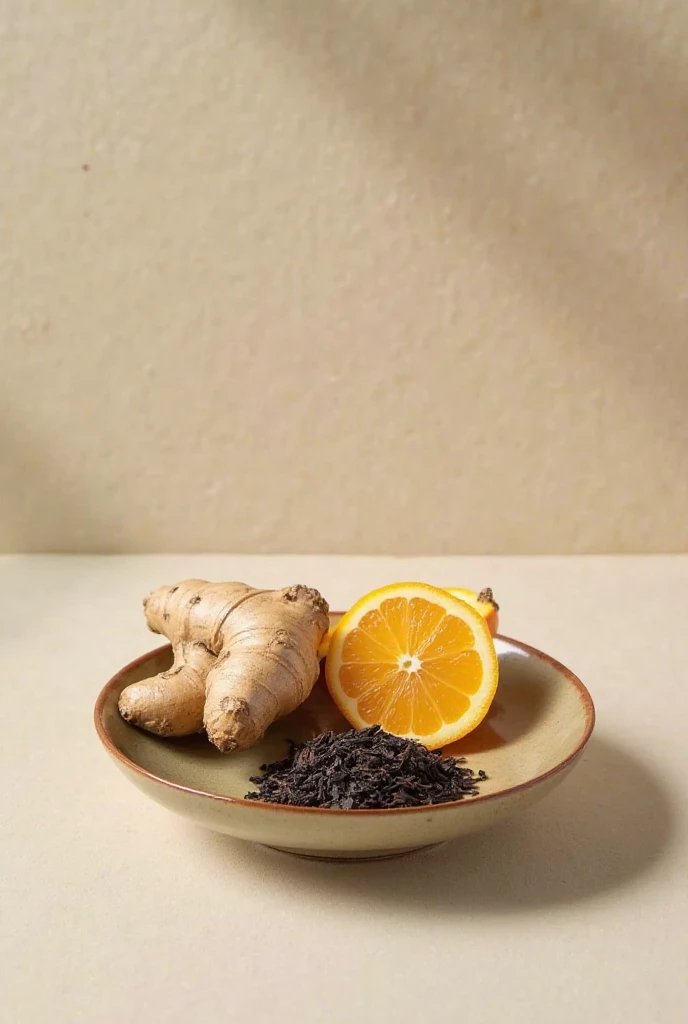
网上韩明成医生推荐过一个类似的茶方,做了一些改良,口感没那么辣。如果能接受辣的程度,而且有一点小感冒,还可以把生姜量加大,榨成汁混合在水里泡水喝,对于一些受寒引起的轻微感冒、咳嗽、发烧都有一定效果。
这个茶方在积食或者没胃口的时候也可以饮用。
不过因为有生姜,建议只在上午饮用,如果是晚上回来发现受寒、胃寒、发冷的情况,晚上也可以喝。
但如果是日常保健,比如去胃寒、去身体的寒凉之气,或者女性大姨妈期间肚子痛,建议在上午饮用,太阳下山后就不要再喝了。
对于这个茶方,有宝妈问小孩子能不能喝。如果小孩子最近咳嗽、痰很多,或者有支原体感染在调理期间,这个茶方会比山楂麦芽苹果水更适合,因为里面加了陈皮,对化痰也有很好的效果。
在临床中,我们经常会建议家长用新会陈皮直接煮水,给咳嗽期间的小朋友当一天的饮用水。
还有宝妈问关于新会陈皮有很多假货,该怎么甄选。
大家记住几点:
不要选颜色太黑的,不要选香气怪异的;
泡水后,尝一下水,是清新的味道,没有发酸的才可以;
陈皮的颜色要接近橘子皮的自然颜色,既不能太黑也不能太黄,和自己家晒干的橘子皮或者刚剥下来的新鲜橘子皮颜色接近的才是好陈皮。
看上去太漂亮、光泽度特别亮的,一般可能是用硫酸熏过的。下次我买到新的陈皮,可以给大家拍照做一下对比,因为现在陈皮价格差异很大,真假难辨,市面上很多说是新会陈皮,但其实是假货。
后期如果大家感兴趣,我可以详细给大家分享一下怎么识别陈皮的好坏。
好的陈皮,颜色接近自然色,泡出来的水有橘子的清香味,没有酸味,而且橘皮可以多次冲泡,口感只会越来越清新,不会发涩。
如果是用硫磺熏过或者特殊手段处理过的陈皮,泡上几次后,口感就会特别苦涩,或者带点淡淡的酸味。
还有宝妈说自己做陈皮容易发霉,陈皮的保存确实很重要,因为它必须防潮,特别容易发霉。
尤其是在南方的回南天,稍不注意就可能发霉。如果想要保存十年、十五年的陈皮,没有好的储存地方,或者不经常拿出来晒、没有妥善照顾,就很容易发霉。
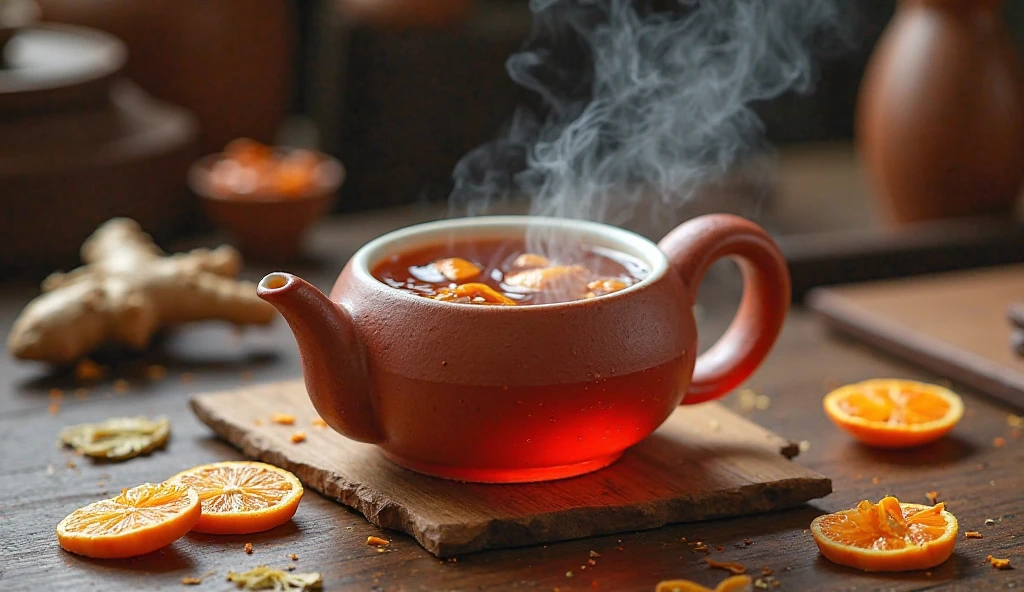
三、温和养胃茶方
黑茶
介绍:黑茶,如安化黑茶,经发酵熬制而成,茶性温和,空腹饮用亦不伤脾胃。
功效:适合女性、常饮酒者、胃肠功能欠佳者、肠炎患者及高血脂人群。它有助于调节肠道菌群,改善胃肠健康,对“三高”人群亦有裨益。
饮用建议:可日常饮用,尤其适合想要通过茶饮调理胃肠者。
注意事项:黑茶适合大多数人群,但肾功能不全者应适量饮用。
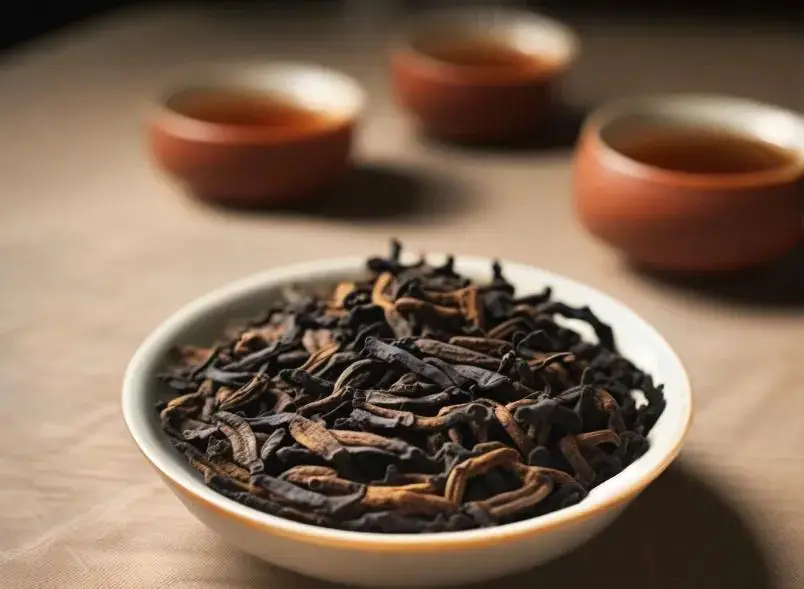
Black Tea
安化黑茶,是由普通的茶树叶发酵后熬制而成的。这款茶发酵后,空腹喝也不太伤胃伤脾,性质比较温和。
对于女性,或者经常喝酒、胃肠有问题的男性,以及有肠炎的人,都可以用黑茶泡水、煮水喝。
高血脂的人也可以日常饮用黑茶。
北方的一些牧民,经常用黑茶加牛羊肉一起煮水,来治疗胃肠疾病,他们那边还流行“茶到病除”的说法。
所以,如果肠道菌群不太好,有肠病,又想通过喝茶来改善胃肠道的情况,黑茶是个不错的选择。
对于女性和一些“三高”人群,黑茶也是比较好的一款茶。可以说,黑茶在所有茶中,相对比较适合所有人群,比普洱更具普遍性。
四、清热消食茶方
白茶
功效:白茶具有清热解毒、美容养颜之效,适合湿热较重的儿童及成人。
饮用建议:优质白茶价格较高,日常可选择性价比高的品种。
注意事项:湿热重的小儿可适当食用发酵食物,如熟普,以清湿热。
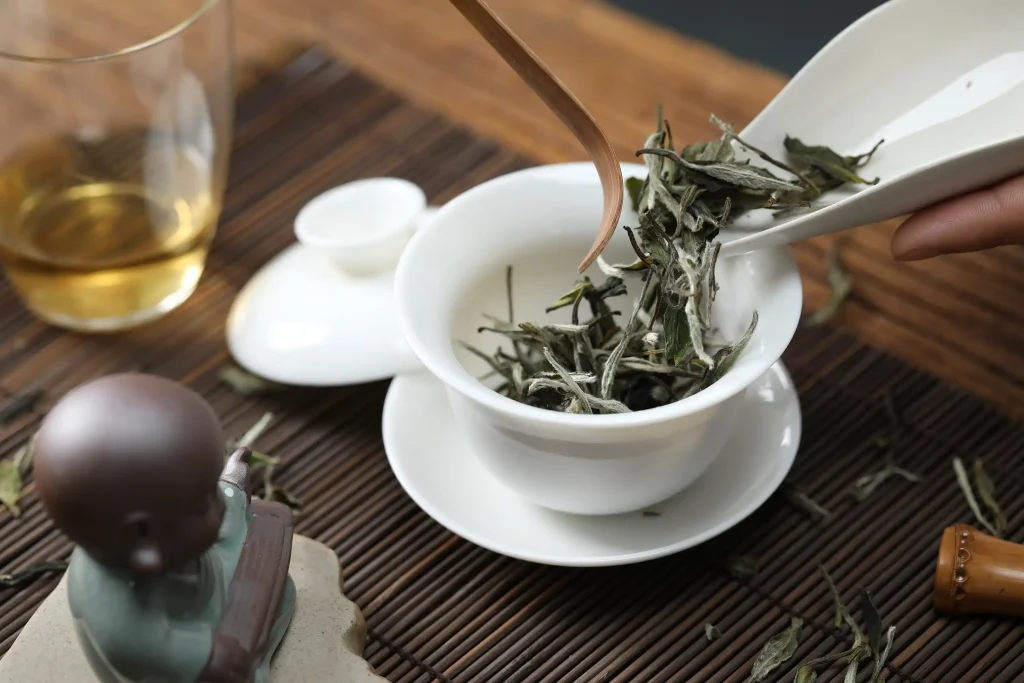
普洱分为生普和熟普,生普偏寒凉,不太适合女性和脾胃虚弱的人群;
熟普相对温和,有一定健脾和保护胃肠道的作用。
很多人对茶的辨别技巧不太了解,很难辨别生普和熟普的真假。
如果大家怕买到不适合自己的茶,可以优先考虑黑茶,这也是中国安化黑茶在全球都卖得特别好的原因之一。
提问:喝过黑茶,感觉喝完后很舒服,黑茶偏温性,和红茶的温性又不一样?
答:红茶感觉容易让人燥热,而黑茶是往下沉的,可以帮助理中焦之气,腹胀、腹泻、便秘的人都能喝。
提问:湿热比较重的小朋友,以及一些成人体质也湿热比较重适合什么茶?
答:可以试白茶,觉得白茶有清热的作用,还有美容养颜的功效。好的白茶价格很贵,像那种白毫银针,有的要几千块钱一斤,甚至更贵,不知道有没有炒作成分,但好一点的白茶确实也要上千块钱一斤。
如果想要经济实惠一些,我更推荐黑茶。对于湿热比较重的小孩子,建议可以吃一段时间发酵的食物,比如熟普,有助于清湿热。日常喜欢喝茶的人,也更建议喝黑茶。
提问:睡眠不太好的人能不能喝茶?
目前没有特别明确的研究表明茶会兴奋人的大脑神经从而影响睡眠,真正可能影响睡眠的是奶茶中含量更高的茶氨酚。对于普通的睡眠障碍,还是要区分引起睡眠不佳的原因,和茶的关系不一定很大。
不过,如果把茶煮得像北宋时期做茶汤那样浓稠,茶氨酚含量过高,可能会影响神经和睡眠质量。像我们平时用养生壶,放一到三克茶叶煮水,很少会影响一个人的睡眠。
但确实也因人而异,有些人喝一点点茶或者奶茶,当天晚上就会睡不着,一方面可能是因为奶茶中茶氨酚含量过高,另一方面可能是对茶氨酚过敏。
对于对茶氨酚过敏的人,建议不要在下午之后喝茶,如果要喝茶,上午喝比较好,下午两点之后就不要再饮用了。偶尔喝茶,对肠道菌群和脾胃都有很好的养护作用。
从中医角度来讲,茶叶尤其是芽尖部分,生发之力更足,浓茶更容易让人失眠,但不浓的茶一般不太会影响睡眠,除非是肾气很虚的人。
对于容易失眠又想喝茶的人,建议不喝最好,如果一定要喝,可以加一点安神的东西一起煮,比如酸枣仁、五味子、补骨脂等,这些有安神、补肾气、收敛肾气的作用。
酸枣仁现在价格比较贵,但泡茶时放一点点就够了,成本也不会很高。
因为我们很多人并没有养成每天喝茶的习惯,今天分享的这些茶方,建议大家用来日常调理和养护脾胃,不需要每天都喝,一个星期喝三到四次就可以。
这些茶方对食材要求确实有点高,比如黄冰糖要纯正的,陈皮要真的,黑茶要买好的。
大家日常可以选择苹果麦芽山楂水,一个星期喝上两回,炒麦芽一般没有假货,苹果也不会有假,山楂也很好买。不过山楂毕竟性偏寒,对于本身脾胃虚寒的小朋友,如果因为积食喝这个茶方,不要超过三天,一个星期喝一次就很不错了。
总结:茶方食材要求高,可选择苹果麦芽山楂水,脾胃虚寒小孩喝此茶方要注意时长和频率。

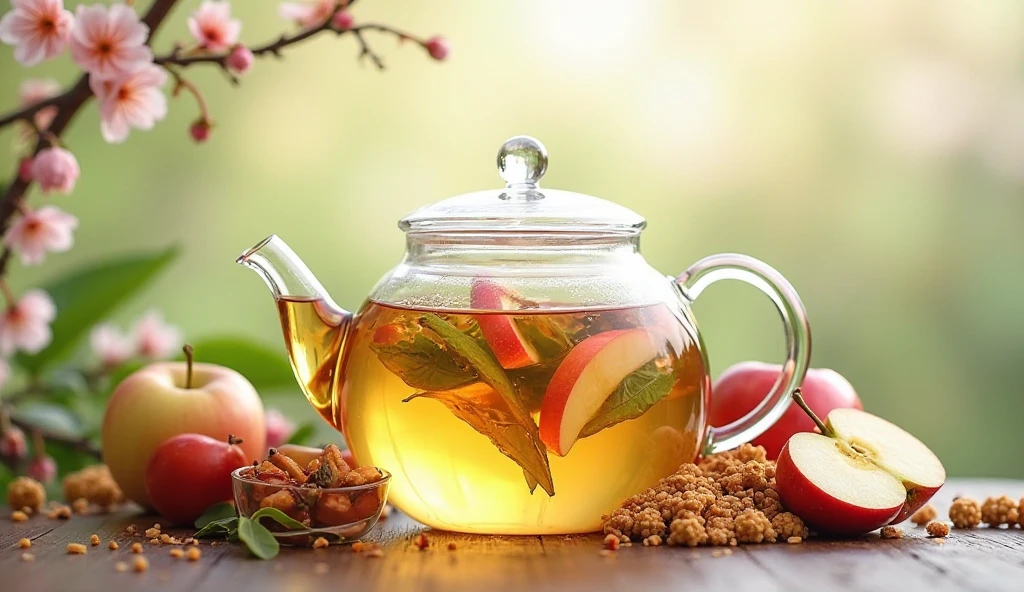
发表回复